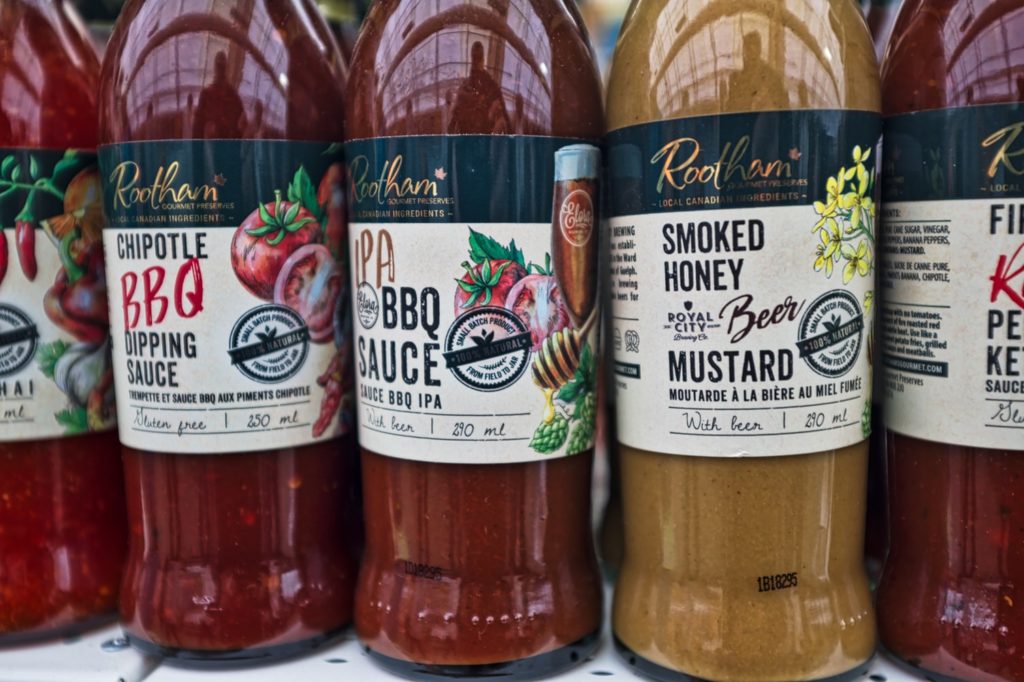This article originally appeared in the November 2019 edition of Senior Scope. Article by Seth Thomas. Photos courtesy Unsplash.
Food label readers will likely have an easier time comparing foods at the grocery story this winter, when the new Nutrition Facts label becomes a requirement for large food manufacturers.
The U.S. Food and Drug Administration (FDA) published the updated rules on packaged food labels back in 2016. While some food products already display the new label, manufacturers who top $10 million in annual sales will be required to make the switch by the first of January. Manufacturers making less than $10 million in annual sales will be required to comply by January 2021.
“These changes were based on science,” said Katlynn Ferreira, a registered dietitian with Coastline. “It’s a better tool for how we’re eating, what we’re eating and what we know about nutrition today. It’s supposed to be a tool to help us make smarter food choices.”
Perhaps the biggest change to the label is right at the top: the serving size and calorie count are now listed in larger, bolder font, making it easier to read. Ferreira said the way the serving size is now measured will better reflect the reality of what people are actually eating and drinking.
Take, for example, ice cream. She said a serving size of ice cream has traditionally been listed as half of a cup. Now a serving size of ice cream is two-thirds of a cup. Similarly, some food packages will be required to display two columns: one based on a serving size, and one based on the entire container.
Certain parts of the label have been added or removed. For example, the “Calories from Fat” section has been eliminated altogether because research shows it’s more important to focus on the type of fat than the amount. However, the new rules require food manufacturers to include any added sugars.
“Added sugars are new to the food label because we now know how prevalent it is in our food system,” Ferreira said. “We want to be conscious about how much added sugar we’re eating. Natural sugar is okay in a balanced diet, but added sugar can be in so many foods – like bread and ketchup.”
The American Heart Association recommends that you limit added sugars to about six teaspoons (25 grams) per day for women and nine teaspoons (36 grams) per day for men. A 12-ounce can of cola contains about 39 grams of sugar.
Toward the bottom of the label, you may no longer see Vitamins A and C, which are not required. Vitamin D and potassium are new requirements, and calcium and iron will continue to be required. Ferriera explained that these changes were made to account for what people are eating: Americans are not commonly deficient in Vitamins A and C, but are more regularly deficient in Vitamin D, calcium, iron and potassium.
The FDA also changed the percent daily value for certain nutrients. If you were to take a particular food product and compare its old label with the new label, the percentages may be different. That’s because the recommended daily amounts have been slightly altered based on the latest research. For example, the daily percentage of salt has been lowered from 2,400 milligrams to 2,300 milligrams. The recommended amount of dietary fiber has been increased from 25 grams to 28 grams.
Finally, the note that appears at the very bottom of the label has been updated to better explain what “% Daily Value” means. Generally, this footnote explains that the percentages that appear throughout the label are based off of a 2,000-calorie-a-day diet. However, not everyone needs to consume exactly 2,000 calories a day.
“We have different needs, restrictions and body types,” said Ferreira. “Keep that in mind when you’re looking at the percentages on the food label.”
To learn more about the changes to the Nutrition Facts label, visit the U.S. Food and Drug Administration at fda.gov. For more nutrition tips, visit the Dartmouth Council on Aging’s free Pound by Pound group, held Mondays at 10 a.m., where Ferreira is a regular guest speaker.



Recent Comments